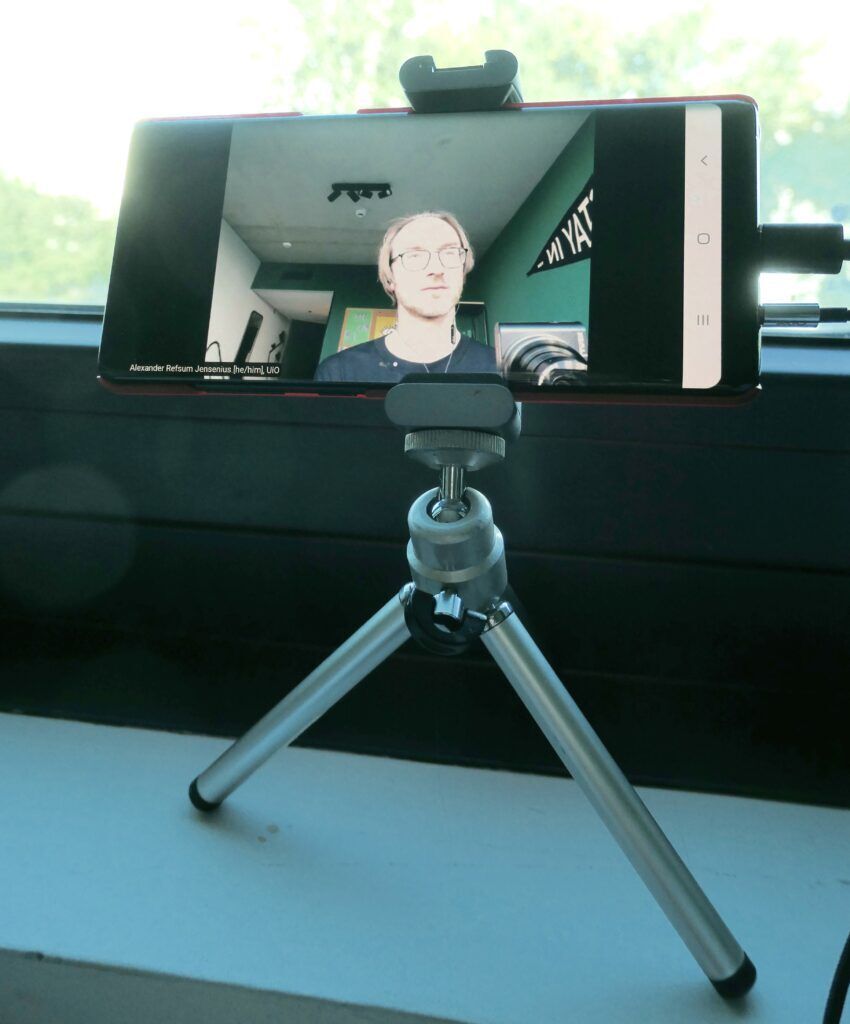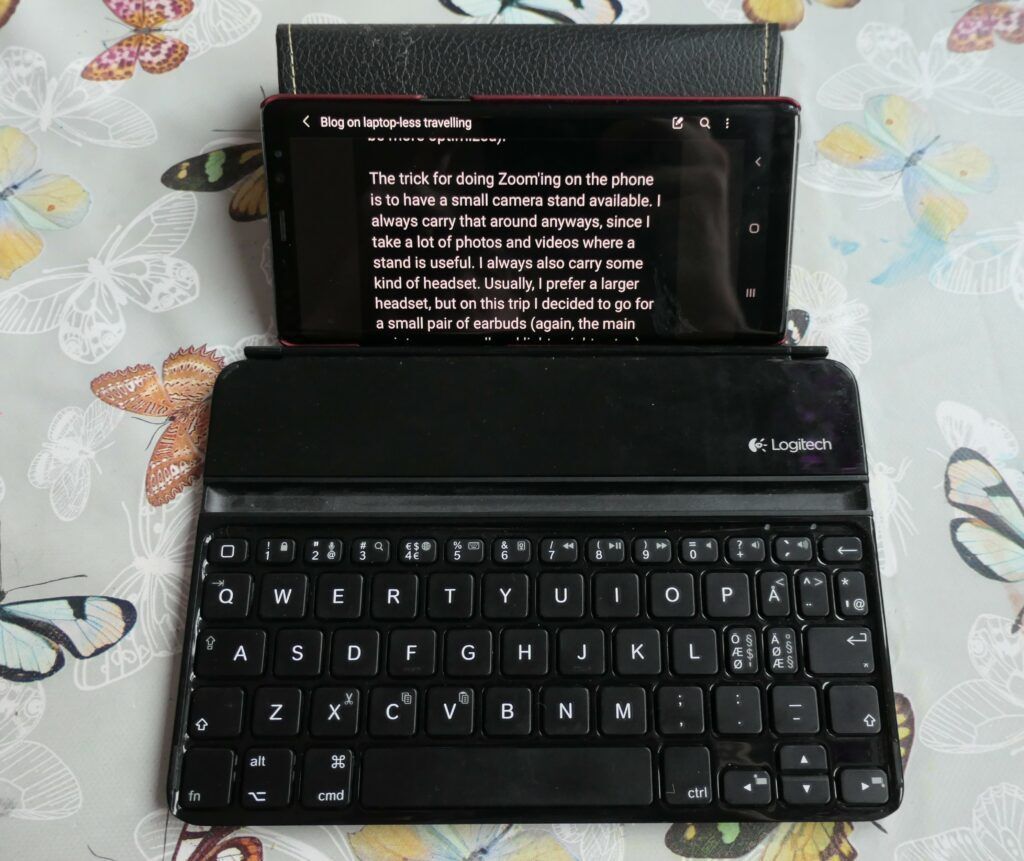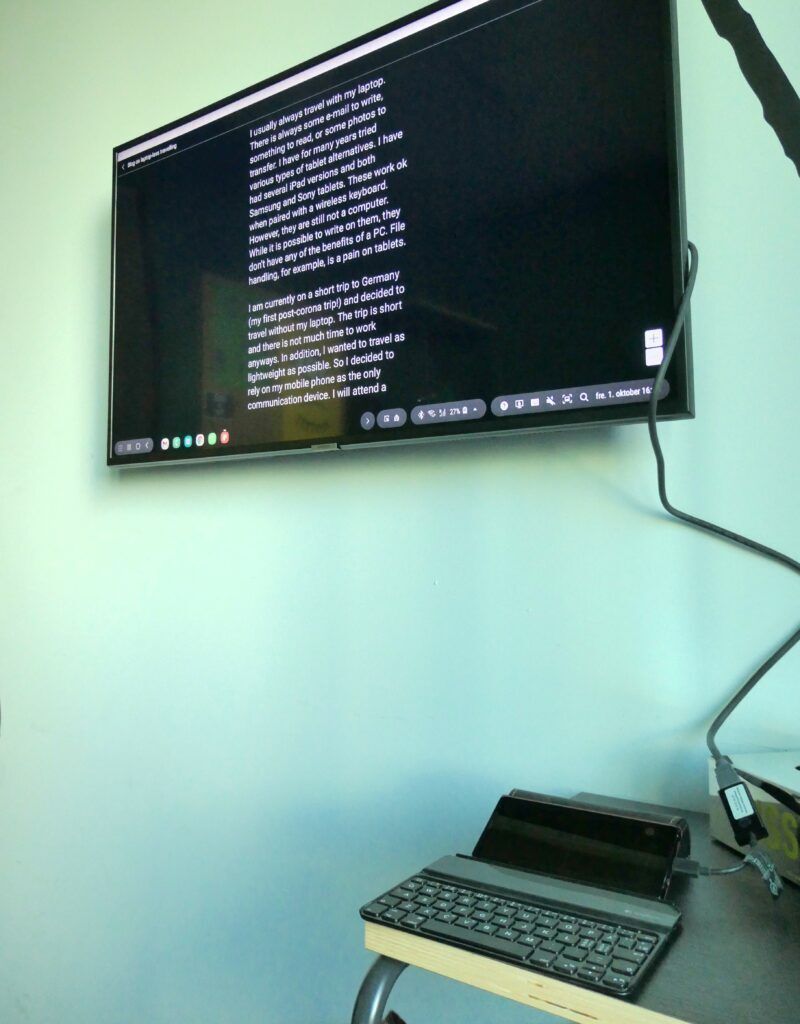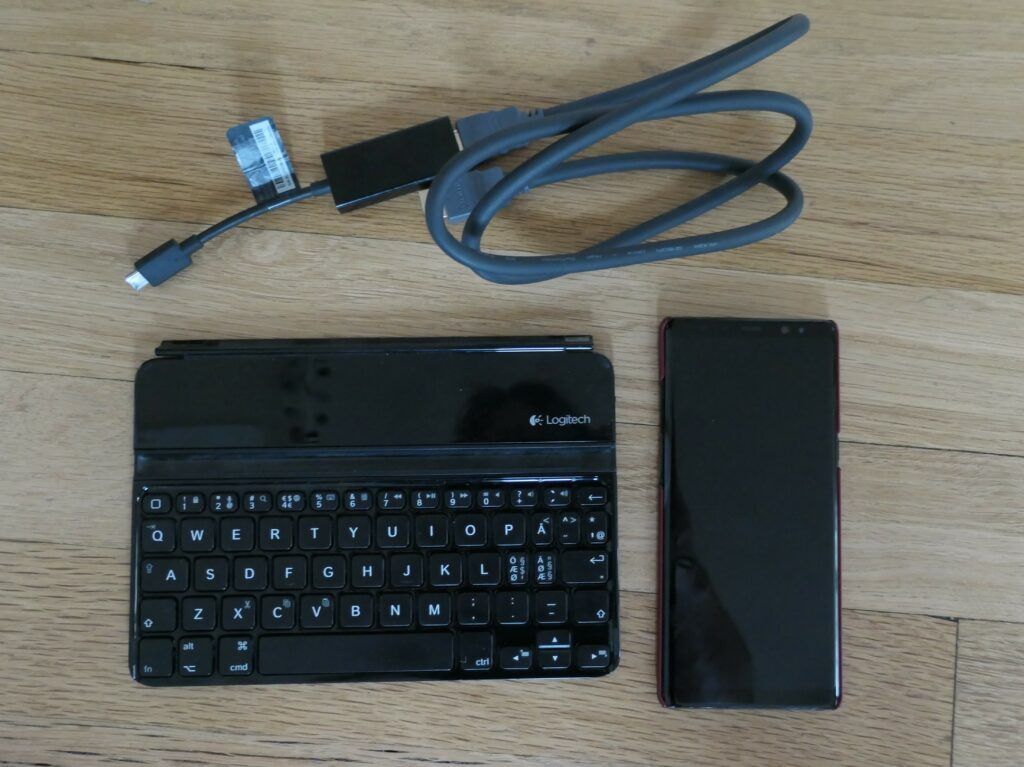I usually travel with my laptop. There is always some e-mails to write, some documents to read and comment on, or some photos to transfer. Still, I often think about whether it was really necessary to drag along the laptop on short trips. It doesn’t weigh too much, but I usually end up carrying a backpack when I bring the laptop. That may not always be a problem, but sometimes it limits mobility and flexibility. I have, therefore, always been eager to find alternatives.
The failure of tablets
I know some people that love their tablets and bring them on travels instead of a laptop. I have always tried to like tables and have owned several over the last decade. I bought the first Samsung Galaxy tablet and the first iPad. I have tried both small and large iPads, but they have all been passed on to my daughters. Over the last few years, I have used a Sony tablet on and off. Usually, more off than on. I like that it has a built-in SIM card, which means it is easy to use for online activities. However, it is a pain to get the keyboard to work. I always have to pair it a couple of times.
One main problem with tablets is that they are something between PC and phone. My Sony tablet actually works as a phone. I have tried (once) to travel with only the tablet. That felt weird. In theory, it worked. In practice, it was a pain. Calling from the tablet worked when I was at the hotel, but not out on the street. So I have found it impossible to travel without a phone.
I am currently on a trip to Germany (my first post-corona trip!) and decided to try travelling with only my phone. No laptop. No tablet. The journey is short, and there is not much time to work anyways. In addition, I wanted to travel as lightweight as possible. So I decided to rely on my mobile phone as the only communication device. The conclusion is that it has worked well. There are a couple of reasons for that, which I will explain in the following.
Great communication
Most of my meetings these days are on Zoom. On this trip, I would only have one Zoom meeting, and it was easy to do that on the mobile phone. Since I didn’t know where I would be located during the call, it was, in fact, easier to take it from the phone. I have found the Android Zoom app to very efficiently handle different bandwidths. The same can not be said about the Zoom client I use on Ubuntu, which requires relatively high bandwidth to function well (the Windows client seems to be more optimised).
The trick for doing Zoom’ing on the phone is to have a small camera stand available. I always carry a camera stand around anyways since I take many photos and videos. I always also carry some headset. Usually, I prefer a larger headset, but I decided to go for a small pair of earbuds (again, the main point was a small and lightweight setup). All in all, for Zoom’ing, using the mobile phone works well.

External keyboard
The biggest challenge with mobile phones is the limited input capacity. Typing with the finger is not an option in the long run. So for travelling, bringing an external keyboard is the only real solution. I have occasionally tested connecting one of my tablet keyboards to my phone. For some reason, it never occurred to me that I could bring one of them with me when travelling.
The conclusion is that I should have thought about this a long time ago. I am currently writing this blog post on my phone using a small, Bluetooth-based Logitech keyboard. It is a minimal and convenient setup. The setup and connection of the keyboard have also worked well so far. Some years ago, I always struggled with pairing up keyboards. The software has improved since now; the connection works every time.

Connecting to a big screen
Another issue with working on a mobile phone is the screen size. It is less important than the keyboard but still an issue for doing accurate typing. A mobile phone screen is ok for writing short texts and replying to e-mails. However, working on a manuscript is challenging.
When I bought my Samsung Galaxy Note 8 some years ago, the main motivation was the Dex mode. This was first based on a particular docking station connected to a screen and keyboard, and mouse. The Dex mode essentially turns the phone into a small “PC”. Well, not a complete PC experience, but at least a full-screen Android experience.
Some, but not all, Android apps work in fullscreen mode. The most important is that all the essential apps, e-mail, browser, notes, etc., function.
I have had a Dex hub in my office for several years but haven’t used it much. After all, in the office, I already have access to a nice PC setup. It was only recently that I discovered that Dex mode now works when connecting the phone through a regular HDMI cable. That is interesting because it is unnecessary to carry the Dex docking station to get the fullscreen experience.
Now I decided to try out Dex when travelling. I brought along an HDMI cable and USB-C adapter, which means I can connect to the TV in hotels. I never watch TV when travelling, but I have noticed that there are always TVs around, usually with easily accessible HDMI ports.

The new “office”
I have for some days relyed on my phone-based setup. On train rides, I have connected the keyboard to type away. At the hotels, I have also connected to TVs to get a fullscreen experience. This has made it possible to keep up with e-mailing and manuscript editing while travelling. There are several benefits to this setup:
- Lightweight: I haven’t weighed the keyboard and HDMI cable and adapter. However, I think they weigh less than the power adapter of my laptop.
- Small size: I can carry the essentials in a small bag.
- Security: Having fewer items to think about also makes it safer. I don’t need to worry about carrying the laptop with me because I don’t dare leave it in a hotel storage.
- Access: Being able to roam without extra cost throughout Europe is one reason this type of setup works. Instead of having to connect the PC to a network or my phone, I am now always on the mobile network. I am used to having 4G everywhere in Norway, but travelling around in Germany for a couple of days, I have had some kind of network in most places.

Not perfect
I am generally very positive about this lightweight setup. It is an excellent alternative to bringing the laptop on such short travels, and I think I will continue with this approach when possible. However, it is not perfect. Some of the things I have thought about:
- Ergonomics: on this trip I brought a small (7") bluetooth keyboard. That is tiny. I also have a 10" keyboard at home and will probably switch to that one for the next travel.
- Battery life: Using the phone for everything also means that the battery drains quicker. The challenge now is that my HDMI adapter has no charging input. Thus I end up draining the battery when using the screen. I will need to check if I can find another HDMI adapter with USB-C charging.
- Android limitations: A challenge of using a limited OS like Android is that, well, it is a limited OS. I tend to use quite a bit of terminal commands for doing things. I also miss having a proper file manager. I still think that the mobile OSes (both Android and iOS) have made it utterly complicated to do regular file management. In practice, I therefore end dumping files in one place and wait to get to a computer to sort everything out.
- Media handling: I am a creator. I write texts, record sound and video, and take photos. I do this on my phone, but also with separate cameras and recorders. All of these can be connected to my phone for media handling, but it is cumbersome. I also don’t have space on my phone to copy over too many files. So now I have to rely on filling up the memory cards and wait for getting back to a PC to copy over. That works for a short trip, but would be difficult for longer.
Summing up
I don’t understand why it took me so long to “discover” this setup. After all, I have had the keyboard and cables I brought along on this trip for many years. Still, it never occurred to me that this could be a viable travel setup. After trying it for a couple of days, I am very optimistic. Bringing a small keyboard + HDMI cable and adapter has allowed me to do what I wanted to do without needing a laptop. It won’t always work, but for such short travels, it is ideal.